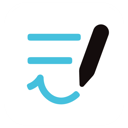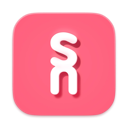Students capture all sorts of things at college/university.
From sources that support their essays, to YouTube videos that inspire their career, all the way to their own social life (with invites to parties or personal development events). Everything matters and helps you build a better way to organize your life. Sometimes that's the difference between an student that excels and a student that falls behind with their grades. Be the student that excels, take every win.
What makes a good student note-taking app?
This is all the criteria we squeezed into our research and knowledge when picking the recommendations:
Mobile Access - Picking tools with iOS and Android apps makes life easier to access things on the go. And a lot happens on the go as a student!
Designed for Students - Choices that mapped to the pain points of students can be very helpful to growth - eg. flashcards, PDFs, useful AI features.
Easy on the wallet - Coughing up more money as a student is a hard sell, so we've flagged whether you'll have a budget for it or not.
All of these recommendations come from years of being a student combined with the trends in the modern education system to keep ahead, whilst making sure you produce original notes and content.
1. RemNote
Best for All Rounder
Students will adore RemNote. It allows users to take notes, attach files (from presentations to audio clips) and use AI to help them.
RemNote offer some good AI features, like summarize to help you condense your own notes and a unique flashcard ability. Before we dive into that, flashcards are a brilliant feature in RemNote that is much loved. You can create a segment of text and turn it into a flashcard, this makes it easy to do "active recall" - a popular technique with students that helps them to use a science-backed way to help remember important things for exams and revisions.
There is one feature we love for students (premium) is the image-based flashcards. They turn any image you have into a flashcard test that allows you to do flashcards with images, without the horrible preparation of the flashcards as the AI will cover and generate them for you.
Pros for Students
Turn your notes into flashcards.
Allows you to attach useful PDFs, presentations or lecture notes.
Amazing flashcard analytics for learning how you are progressing for exams.
The text editor is fantastic and works in markdown.
Best suited for
Not for casual students much better for those going hard on organizing notes.
Those students who want the assistance of flashcards or testing themselves.
Best suited for PhD or masters students who can access their 5-year pricing plans (good value).
On a budget or not?
RemNote has a generous free plan for unlimited notes for students.
But they do charge around $8 per month.
2. Heptabase
Great for Visual Researching
If you're a visual thinker (you like to see how notes connect) then you'll love Heptabase as a student.
The objective of Heptabase is to help you see note relationships, move them around a canvas & then pop them open as you take more of them. Many students like this as it gives them a bit more control of how their notes are laid out, like a digital desk for ideas/thoughts/researching. Inside of Heptabase, you can also tag tasks assigned to each note, journal per day using daily notes, or even use mind maps to visualize ideas.
Many people love this sort of new "visual note-taking app" for research and study, so well worth considering but remember it's a unique tool compared to a traditional note-taking app you might know like Apple Notes.
Pros for Students
Fantastic for visual thinkers.
Good as a way to associate a task you might need to do to a note.
Putting notes next to each other as you write another one (perfect for research).
Best suited for
Researching and stacking tasks with your notes.
Those students who use images & like to have lots of tabs open.
On a budget or not?
Sadly not for many.
Heptabase is $11.99 per month with no free plan.
You can give it a try with a free trial.
3. Goodnotes
The perfect iPad companion
Goodnotes rocks for iPad users. It just works wonders.
It allows you to take notes with your Apple pencil or stylus. This makes life easier to bring sketches to life, but it doesn't stop there. There are AI features that help upgrade your handwriting, collect up typos and fix them, so even when you're coming off from an all-nighter, you'll be able to worry less for mistakes. It is reliable and fast app that is well-updated and supported by their team.
It comes on a range of devices and students will fall in love if they're creative in how they take notes with colors, text formatting, stickers and loads more to make all your notes into an art piece. Even templates help you keep things in order.
Pros for Students
Doesn't just work for iPad, but for desktop and Android students.
Has some AI features for upgrading the look of your handwriting and typos.
Folders to organize all your notes so there's no free for all.
Best suited for
Creative students who love using their sketches to bring ideas or lectures to life.
Those who want to maximize their iPad or tablet devices.
On a budget or not?
They have a free plan.
But there paid plan is a decent $9 - $12 per year.
This is really reasonable.
4. Supernotes
Best for Sharing Notes
Supernotes is one of the more attractive note-taking apps that will have all your friends jealous.
It allows you to take notes inside these cards, cards can be organized and put into folders. You can even journal notes, make checklists, use AI to help clean up your note. Students also like that they can help visualize notes using the graph mode. Our killer feature that turns a lot of heads is the collaborative notecards that allow you to share and collaborate on notes together, this is perfect if one of you miss a lecture or class, that you want to catch-up on.
Pros for students
Just works smoothly and looks wonderful for your aesthetic.
Collaborative notes for sharing with other students in your class - even leave comments.
AI clean-up allows you to remove mistakes from grammar to structure in the note.
Has daily notes too for creating your own journal entries.
Best suited for
Those who want a good looking note-taking app.
You have a group of friends that you want to collaborate on notes on.
On a budget or not?
There is a free plan with 100 cards.
Likely you'll hit this fairly fast! And it's $8+ per month after that.
Not the most expensive on the list, but an investment.
Supernotes
A beautifully-designed note-taking tool that was originally developed for students.
5. Recall AI
Perfect for Research Summarizes
Recall is a unique note-taker for students and is growing in popularity thanks to their AI features.
It allows you to take a website, YouTube URL or podcast that explores a topic you're researching and turn it into AI summarized notes. This is a great resource if you're someone who is exploring topics, or just want to be able to use visual learning methods like video to help build on your learning of a topic. You can then turn them into flashcards, get Recall to folder them and then explore topics that might be of interest - in the realm of your uploaded content.
Pros for Students
Clip YouTube or podcasts and turn them into AI summarizes.
Turn any of your notes or AI notes into flashcards to help quiz yourself.
Use AI chat to help expand your research.
Best suited for?
If you use YouTube videos or podcast to learn or study, you'll love this.
Those who like to not only study, but explore the web too, will like this.
It's like Wikipedia and RemNote having a baby.
On a budget or not?
You get a limited budget of AI crawls.
After that, it's worth looking premium which is $7 per month.
6. Obsidian
Best for Saving Money
Obsidian is one of the most well-known note-taking apps at this point, and it makes for a very attractive student note-taker.
Obsidian won't give you all the AI features, but what it does is give you a free, offline, local-first, markdown note-taking app. It's free which will go down well with a lot of students, it's fast but does take some time to learn and embrace. You can take notes, split notes for writing, see how your notes connect, change themes, add checklists, and manage notes in folders. Everything is stored on device, something to note if you're prone to loosing your mac or Windows device. For students that caught a twinkle of Heptabase or Scrintal, will love that Obsidian has a free to use feature called Canvas for those who want to add images and take notes in a canvas/whiteboard layout.
Pros for Students
Local first meaning your notes are protected - but bad for students who loose devices.
Good for writing and taking long form notes.
Free to use which makes it a hit with students on a low budget.
Whiteboard mode for canvas planning or note-taking.
Best suited for?
Students who want a good writing experience.
Those students not wanting to spend any money on a note-taker.
On a budget or not?
Free to use.
Want to sync between devices? It's $4 per month. Not bad!
7. Coconote AI
Best for Audio Transcription
Coconote AI is an application that is used to turn audio into things like notes, flashcards, and quizzes.
This is available in over 100 languages, and it’s got a really high App Store rating (4.9), with their website stating that over a million students are using this right now. The app is a lot smarter in the approach to taking notes, as you can leave your phone next to you during the lecture, and then after an hour, if you’re using Coconote’s premium, you can then turn all of those transcribed notes into a flashcard quiz that will help you to turn a recorded lecture into something more practical to test that you are truly listening.
There are also quizzes and podcasts that can be created, so that you can approach it in the learning style that best suits you.
Choosing the Right App?
Now that you’ve explored the range of options, choosing a note-taking application that fits your needs as a student is essential. Each app offers unique features, and the right choice depends on your personal preferences, study habits, and academic requirements. Here’s a breakdown to help you decide:
Best All-Round Note-Taking Apps
If you’re looking for a well-rounded solution that is easy to use in a variety of situations—whether for lectures, group work, or personal study—we recommend:
Notion: Offers a free academic plan with powerful templates and collaboration features, making it great for managing tasks and organizing notes.
Microsoft OneNote: Excellent for students with Microsoft licenses, offering familiar tools, free access, and interactive features like Copilot AI.
RemNote: A strong choice for students who want to combine note-taking with spaced repetition flashcards for effective learning.
Best for Personal Knowledge Management (PKM)
For students engaged in research or those who want to organize extensive notes in a highly structured way, PKM-focused apps are ideal. These apps help you visualize connections between ideas and manage complex information:
Obsidian: Great for its bidirectional linking, markdown-based note storage, and Canvas feature for visualizing ideas.
Capacities: Offers a unique object-based organization system, perfect for creating structured knowledge bases.
Supernotes: Combines visual note cards with collaborative capabilities, making it suitable for both individual study and group projects.
These tools are especially useful for students working on research-intensive assignments, dissertations, or collaborative academic work.
Best for Task and Productivity Integration
If you want to streamline your academic life by combining note-taking with task management, consider:
Amplenote: Its Task Score feature automatically prioritizes tasks based on urgency and importance, helping students stay on top of deadlines.
Lunatask: A privacy-focused app that integrates tasks and notes seamlessly, with encryption for added security.
These apps are excellent for students managing tight schedules, balancing coursework, and keeping track of tasks and projects.
Best for iPad Users
If you use an iPad or stylus for taking notes, these apps stand out:
GoodNotes: Perfect for visual thinkers, offering tools for sketching and annotating notes, with affordable premium pricing.
Bear Notes: A lightweight, elegant option for Mac and iOS users who prefer offline functionality and markdown support.
Both apps excel in stylus-friendly features, making them great choices for students who prefer handwritten or visually structured notes.








